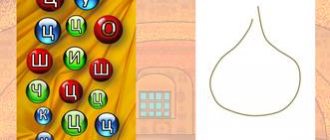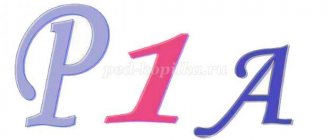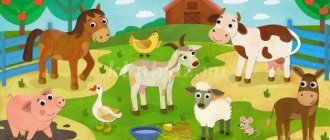Summary of a lesson on speech development for children 4-5 years old “Where did the bread come from”
Municipal budgetary preschool educational institution kindergarten "Raduga" Staroyurievsky district, Tambov region
Summary of a lesson on speech development for children 4-5 years old
"Where did the bread come from"
Educator:
Cherkasova N.A.
2020
Target
: Tell the children what importance bread has for people, how many people of different professions work to make bread appear on our table.
Tasks:
— introduce children to the process of growing bread;
- give children an idea of how bread comes to our table;
- pay attention to the content of labor in the city and village;
— to cultivate a respectful attitude towards people’s work, a caring attitude towards it.
Equipment:
pictures of bread products, presentation of the sequence of growing bread.
Vocabulary work
: baked goods, aromatic, fragrant, rosy.
Progress of the lesson
Educator:
Guys, listen and guess what we will talk about today.
Soft, lush and fragrant,
He's black, he's white,
And sometimes it’s burnt.
It's a bad lunch without him
There is nothing more delicious in the world!
(bread).
—
That's right, it's bread. It's on our table every day. Neither breakfast, nor lunch, nor dinner can be done without it. He nourishes us throughout our lives.
- Guys, do you like bread? What kind of bread do you like? (Children's answers) .
What kind of bread is there? (Black White)
- Let's think about it and name a lot of words, what kind of bread is it?
(Delicious, soft, stale, white, hot, fresh, aromatic, appetizing).
Educator:
Bread can be different, but it is always tasty and healthy.
Bread contains substances that help children grow and become strong. Bread contains vitamins that improve mood and help the heart work well.
- Who knows where the bread came to us from? (Mom bought it at the store).
Today in the store you can buy as much bread as you want, but you must treat every piece with respect, do not buy too much and do not throw away the bread. After all, he came a long way before he ended up on the shelf in the store.
How did he get into the store? Who knows? (Children's answers)
Physical exercise “Oh okay, okay”
Oh, okay, okay (clap hands)
We bake pancakes (claps hands)
Knead the dough, and the dough is tight in the bowl (imitate stirring with your hands in a circle)
The dough fell on the table, the dough plopped on the floor (crouched down)
The dough has run away, start over (easy running in a circle).
Educator:
I will now show you the path bread takes before it reaches our table.
Show presentation (slide 1)
Educator:
In the spring, as soon as the ground thaws and dries out, a tractor comes out into the field.
He pulls an iron plow behind him, which plows the ground deeply. It comes out in large, dense clumps. (slide 2)
- Do you think it’s possible to throw grain into such ground? Children's answers)
Educator:
Of course not!
The earth must first be loosened using a large rake, which is called a harrow (slide 3)
- And now the earth has become soft, docile and loose. Now you can sow the seeds into the ground. (slide 4)
—
Now the grains have sprouted.
The grains in the ears ripen all summer. The field is very beautiful at this time. (Slides 5-6)
- And when autumn comes, the ears fill up and ripen. It's time to harvest, otherwise the grains may fall off. (Slide 7)
—
The combine cuts the ears and threshes grains from them; these grains are poured through a special long sleeve into trucks, which constantly drive up at the combine operator’s signal.
(Slide
-
Machines transport some of the grain to large grain silos called elevators.
There it is dried and stored. (Slide 9)
-
To obtain bread and other bread products, grain is taken from elevators to flour mills, where it is ground into flour.
(Slides 9-10)
—
Then the flour is transported to bakeries and factories using special vehicles
.
Here they make dough from flour and bake bread from it.
(Slide 11)
- Even at home you can bake delicious and fragrant bread. (Slide 12)
—
Many different flour products are made from flour.
(Slide 13)
Educator:
How many people work to make delicious bread! It must be treated with care. Do not crumble bread while eating, do not leave uneaten pieces, do not throw them away. When you eat bread, remember how much work went into each piece. I hope that now none of you will dare to throw even a piece of bread, and explain to the other guys why this is not necessary.
Summarizing:
- So how should you handle bread? (be careful, don’t throw away the bread; take as much as you can eat; don’t crumble the bread at the table).
— Bread is very difficult to grow, and a small grain travels a long way to get to our table.
— Bread is grown by people of different professions, you need to respect their work;
— The bread is delicious, it is good for our health.
And I would like to end our lesson with this poem:
(Slide 14)
Educator:
Guys, it was a pleasure to work with you. Well done to all of you. And at parting, I would like to treat you to these cookies. They were also baked from flour. And you will treat your comrades in the group. (Gives treats to children)




